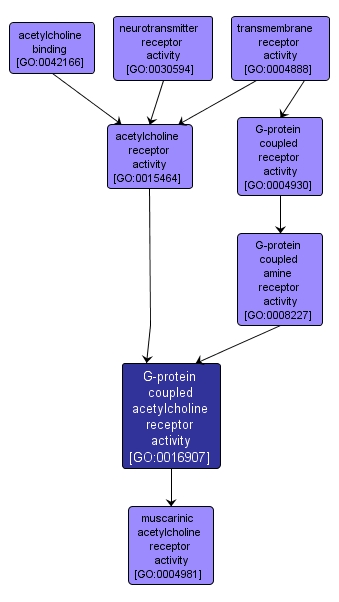GO TERM SUMMARY
|
| Name: |
G-protein coupled acetylcholine receptor activity |
| Acc: |
GO:0016907 |
| Aspect: |
Molecular Function |
| Desc: |
Combining with acetylcholine to initiate a change in cell activity via activation of a G protein. |
Synonyms:
- G protein coupled acetylcholine receptor activity
- G-protein-coupled acetylcholine receptor activity
|
|

|
INTERACTIVE GO GRAPH
|














